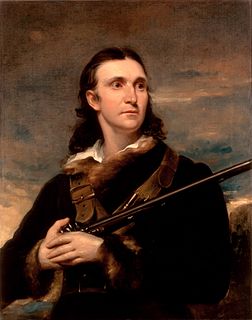 W
WJohn James Audubon was an American ornithologist, naturalist, and painter. His combined interests in art and ornithology turned into a plan to make a complete pictoral record of all the bird species of North America. He was notable for his extensive studies documenting all types of American birds and for his detailed illustrations that depicted the birds in their natural habitats. His major work, a color-plate book entitled The Birds of America (1827–1839), is considered one of the finest ornithological works ever completed. Audubon is also known for having identified 25 new species. He is the namesake of the National Audubon Society and his name adorns a large number of towns, neighborhoods, and streets in every part of the United States. Dozens of scientific names first published by Audubon are currently in use by the scientific community.
 W
WAmanda R. Block was an American artist. Born in Louisville, Kentucky, Block studied art in Cincinnati, Ohio, and exhibited sculpture at her first national show at the Chicago Art Institute in 1941. Her graduation from John Herron School of Art in 1960, at age 48, marked a return to creative work. Her superb color sense has always been Amanda's trademark. Bright, sensual, engaging, full of movement, her work draws the viewer into its orbit, forcing questions upon us. Her female subjects, no matter how abstract their portrayal, always seem to be real people; and we, the viewer, feel forced to question: who are they, and why do they speak so clearly to us.
 W
WEmery Bopp was an artist and long-time chairman of the Division of Art, Bob Jones University.
 W
WJoseph Henry Bush was an American portrait painter. Born in Kentucky, he was trained by Thomas Sully in Philadelphia, and he opened his first studio in Frankfort, followed by Lexington and Louisville. He also lived in Cincinnati, Ohio. His work was exhibited at the Kentucky Governor's Mansion in 2011 with other Kentucky portraitists. His portrait of President Zachary Taylor is at the White House.
 W
WMary-Russell Ferrell Colton was an American artist, author, educator, ethnographer, and curator. She is one of the principal founders of the Museum of Northern Arizona. She was a member of the Philadelphia Ten, exhibiting at the group's annual shows from 1926 to 1940. She was also a member of the National Association of Women Painters and Sculptors, the American Watercolor Society, and the American Federation of Arts. She is known for her advocacy of the arts, Native American rights, and women's rights. For her advocacy of Native American arts, she received a certificate of appreciation from the United States Department of the Interior, Indian Arts and Crafts Board in 1935. In 1982, she was inducted into the Arizona Women's Hall of Fame.
 W
WDean Cornwell was an American illustrator and muralist. His oil paintings were frequently featured in popular magazines and books as literary illustrations, advertisements, and posters promoting the war effort. Throughout the first half of the 20th century he was a dominant presence in American illustration. At the peak of his popularity he was nicknamed the "Dean of Illustrators".
 W
WCharles Courtney Curran was an American painter. He is best known for his canvases depicting women in various settings.
 W
WMaria Thompson Daviess was an American artist and feminist author. She is best known for her popular novels written in the early 20th century, with a "Pollyanna" outlook, as well as several short stories, among them, “Miss Selina Sue and the Soap-Box Babies," "Sue Saunders of Saunders Ridge" and "Some Juniors.". Daviess was affiliated with the Equal Suffrage League in Kentucky, being the co-founder and vice-president of the chapter in Nashville and an organizer of the chapter in Madison.
 W
WFrank Duveneck was an American figure and portrait painter.
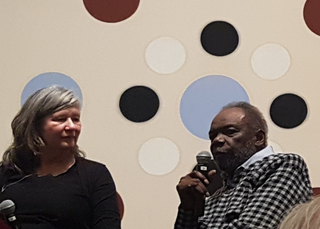 W
WSam Gilliam is an African-American color field painter and lyrical abstractionist artist. Gilliam is associated with the Washington Color School, a group of Washington, D.C. area artists that developed a form of abstract art from color field painting in the 1950s and 1960s. His works have also been described as belonging to abstract expressionism and lyrical abstraction. He works on stretched, draped and wrapped canvas, and adds sculptural 3D elements. He is recognized as the first artist to introduce the idea of a draped, painted canvas hanging without stretcher bars around 1965. This was a major contribution to the Color Field School.
 W
WBryce Hudson is a Moroccan-American Neo-plasticist painter. Hudson's early geometric paintings explore race and stereotypes through means of the Geometric abstraction style. Later in his career, influenced by the theories of Constructivism the paintings and wall sculptures referenced abstracted architectural and spatial elements. His printmaking combines movements in art history such as Minimalism and Rococo.
 W
WMatthew Harris Jouett was a noted American portrait painter, famous for painting portraits including Thomas Jefferson, George Rogers Clark and Lafayette.
 W
WWilliam "Bill" Kincaid was known nationally in the entertainment trade as a costume designer until 1990, and is also known as an artist creating pet paintings in brilliant colors on large canvases.
 W
WNicola Marschall was a German-American artist who supported the Confederate cause during the American Civil War. He designed the original Confederate flag, the Stars and Bars, as well as the official grey uniform of the Confederate army.
 W
WAmanda Matthews is an American sculptor and painter from Louisville, Kentucky, United States, who lives in Lexington, Kentucky.
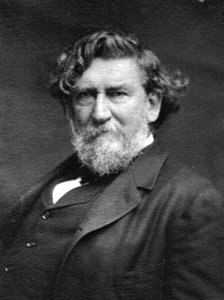 W
WThomas Satterwhite Noble was an American painter as well as the first head of the McMicken School of Design in Cincinnati, Ohio.
 W
WAnn Louise Rice O'Hanlon was a 20th-century American visual artist who painted murals. O'Hanlon is best known for a fresco painted on the wall of Memorial Hall at the University of Kentucky in 1934 for the Treasury Relief Art Project. The fresco has repeatedly attracted negative attention for what many view as its romanticized depiction of African American slaves. In 2020 University of Kentucky President Eli Capilouto announced the fresco would be removed.
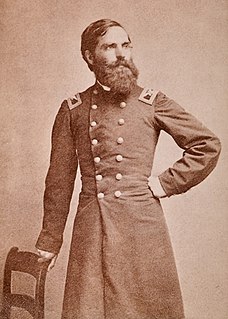 W
WSamuel Woodson Price was a portraitist, author and Union Army officer in the American Civil War.
 W
WPaul Starrett Sample was an American artist who portrayed life in New England in the middle of the 20th Century with a style that showed elements of "Social Realism and Regionalism."
 W
WSamuel Addison Shute (1803–1836) and Ruth Whittier Shute (1803–1882) were a husband and wife team of itinerant portrait painters active in New England and New York State during the 1830s. Ruth Whittier Shute continued painting through the 1870s.
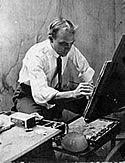 W
WPaul Sawyier, one of Kentucky's most renowned artists, was an American impressionist painter.
 W
WDixie Selden was an American artist. She studied with Frank Duveneck, who was a mentor and significant influence, and William Merritt Chase, who introduced her to Impressionism. Selden painted portraits of Americans and made genre paintings, landscapes and seascapes from her travels within the country and to Europe, Asia, the Middle East and Mexico. She helped found and was twice the president of the Women's Art Club of Cincinnati. Her works have been exhibited in the United States. She was one of the Daughters of the American Revolution and on the Social Register.
 W
WBob Thompson was an African-American figurative painter known for his bold and colorful canvases, whose compositions were appropriated from the Old Masters. His art has also been described as synthesizing Baroque and Renaissance masterpieces with the jazz-influenced Abstract Expressionist movement.
 W
WPatty Prather Thum was an American artist from Louisville, Kentucky known for her landscapes, paintings of roses, and book illustrations. She studied art at Vassar College and the Art Students League of New York and maintained a portrait and landscape studio in Louisville for 35 years. She taught art, illustrated books and magazines, was an inventor, served as the president of the Louisville Art League, member of the Louisville Women's Club, and was the art critic for the Louisville Herald until 1925.
 W
WEdward Troye, was a painter of American Thoroughbred horses.
 W
WRalph Burke Tyree was an American artist of the 20th century who had a prolific career painting scenes from the South Pacific. His love of the islands was sparked as a U.S. Marine during World War II when he was posted to Samoa. After the war, he split his years between California and the Pacific, capturing the exoticism of island people and landscapes in oil on board and black velvet.
 W
WWalter Ufer was an American artist based in Taos, New Mexico. His most notable work focuses on scenes of Native American life, particularly of the Pueblo Indians.
 W
WAdalin Wichman was an American sculptor and artist from the U.S. state of Kentucky. Wichman designed the Eclipse Award Trophy in 1971, which are awarded to horses and individuals who have made outstanding contributions to equestrian sport. Her work also included jewelry design, paintings, bronze sculptures, and portraits. Examples of her work can be found in public and private collections worldwide, including the art collection of Queen Elizabeth II, the Kentucky Derby Museum and the Lexington Public Library.
 W
WEllis Wilson was an African-American artist associated with the Harlem Renaissance.
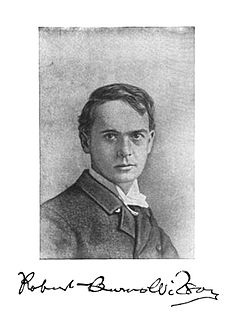 W
WRobert Burns Wilson was an American painter and poet.